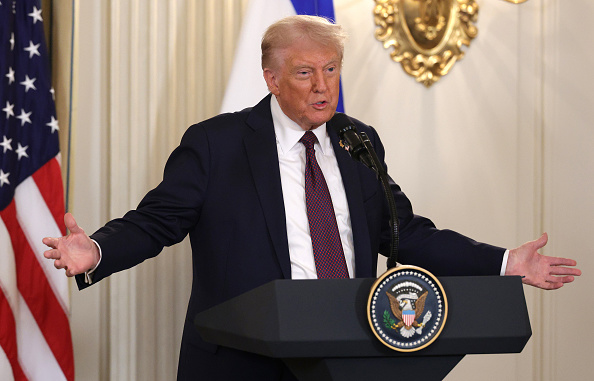U.S. President Donald Trump: ‘We have more nuclear weapons than any other country.’
Wrong! Russia, not the U.S., has the largest number of nuclear weapons in the world.
U.S. President Donald Trump: ‘Russia announced doing a nuclear test.’
Wrong! Russia tested two new weapons capable of carrying nuclear warheads. More on that in just a bit.
U.S. President Donald Trump: ‘And China is testing too … you just don’t know about it.’
Wrong again! There’s no evidence of a Chinese nuclear test since 1996. What china is doing, though, is testing nuclear-capable missiles.
In other words, much of what U.S. President Donald Trump claims is, to borrow from him, “Fake news”! President Trump is just being himself when he sounds alarmist. But, on a serious note, is he dragging the world into a new arms race?
How it all began
South Korea; 30th October. Trump is minutes away from his much-anticipated meeting with President Xi Jinping of China. This is to be their first in-person meeting in six years and the first in President Trump’s second term in office. President Trump gets on board the helicopter that will fly him from Gyeongju to Busan for the meeting. He’s still in the air when he drops a post on his Truth Social account; and drops a bombshell that, literally, sucks the air out of political discourse and veers it in an unexpected direction.
The post reads – “I have instructed the department of war to start testing our nuclear weapons.” It’s not a slip of the tongue. He means it. He tells journalists on his flight back to the U.S.: “We don’t do testing. We’ve halted it years, many years ago. But with others doing testing, I think it’s appropriate that we do also.”
President Trump talks about it a third time after he returns home to his estate in Florida. He speaks to C.B.S. News about wanting to restart nuclear tests. In the full interview posted online, President Trump says North Korea and Pakistan are testing and therefore the US. should follow suit.
This is a dramatic reversal of U.S. policy. The last U.S. nuclear explosive test was in 1992. Nuclear non-proliferation specialists warn that such a move could undermine decades of arms-control norms, including the framework around the Comprehensive Nuclear‑Test‑Ban Treaty, which the U.S. signed but never ratified.
It raises a number of questions.
– What kind of “testing” does President Trump mean? He does not clearly say the words “explosive nuclear detonation.” So, what does he have in mind?
– Who will carry it out? President Trump names the Department of War but, historically, it’s the Department of Energy that oversees nuclear tests.
– Where and when? President Trump skirts specifics. He does not specify a test site. He does not give a timetable either.
– And most importantly, what is his justification for wanting to resume nuclear testing?
President Trump cites threats from Russia to buttress his argument in favour of resuming nuclear testing but not all experts are convinced. What Russia did test, however, were a nuclear-capable cruise missile called the Burevestnik on 21st October and a nuclear-capable underwater drone or torpedo called the Poseidon on the 28th.
The Kremlin spokesperson, Dmitry Peskov, says that this cannot in any way be interpreted as a nuclear test. He says: “Regarding the tests of Poseidon and Burevestnik, we hope that the information was conveyed correctly to President Trump.”
President Trump also claims that China is rapidly expanding its nuclear arsenal and will catch up to the U.S. in five years. He brings up the issue of Chinese activity at Lop Nor – a military base in the Xinjiang region of China’s far-west – when he speaks about the U.S. wanting to regain control of the Bagram base in Afghanistan. “We want that base back … one of the reasons we want the base is [that] China tests nuclear weapons there,” he told a joint news conference with British Prime Minister Keir Starmer in the U.K.
Beijing denies President Trump’s accusations. A Chinese foreign ministry spokesperson says that China has faithfully observed its commitment to suspending nuclear tests. The Chinese official hopes that the U.S. side will earnestly fulfil its obligations under the C.T.B.T. and its commitment to suspending nuclear tests, take concrete actions to maintain the international nuclear disarmament and non-proliferation regime, and preserve global strategic balance and stability.
This mash-up of statements, omissions, and claims by President Trump has left allies, adversaries and even U.S. officials scrambling to interpret his intent.
Matthew Bunn, a nuclear-weapons expert at Harvard University in the U.S., tells C.N.N. that every statement in President Trump’s social-media post is wrong. Bunn says: “It’s not true the United States has the world’s most nuclear weapons. It’s not true that other states are carrying out nuclear tests. President Trump seems to think it’s the Department of Defence that carries out nuclear tests. It’s not. It’s the Department of Energy.”
Daryl G. Kimball, the executive director of Arms Control Association, says that Trump is misinformed and out of touch and that the U.S. has no technical, military, or political justification for resuming nuclear explosive testing for the first time since 1992. Kimball goes on to say that “Trump will trigger strong public opposition in Nevada, from all U.S. Allies, and it could trigger a chain reaction of nuclear testing by U.S. adversaries and blow apart the Nuclear Non-Proliferation Treaty.”
A former U.S. lawmaker, John Tierney, who now heads the Centre for Arms Control and Non-proliferation, says that it makes no sense from a strategic point of view for the United States. Tierney adds: “One day he wants everyone to get rid of their nukes. The next day he wants to start testing? It’s dangerous.”
Robert Floyd, the head of the Vienna-based Comprehensive Nuclear-Test-Ban Treaty Organisation, expresses alarm over President Trump’s remarks. He says that “any explosive nuclear weapon test by any state would be harmful and destabilising for global non-proliferation efforts and for international peace and security.”
A sitting U.S. lawmaker, Edward Markey, who co-chairs the Nuclear Weapons and Arms Control Working Group, says that he wants to introduce legislation to prevent President Trump from restarting nuclear testing by stopping funding for it.
Iran’s Foreign Minister Abbas Araghchi describes the move as “regressive” and accuses the U.S. of acting like a “nuclear-armed bully.”
U.S. Energy Secretary Chris Wright has since clarified that the tests will not include actual detonations. Instead, they will involve all other parts of a nuclear weapon to ensure they can trigger an atomic explosion.
However, analysts warn of a potential spiral into a new arms race. The U.S.-based Bulletin of the Atomic Scientists published a prescient article in February, barely a month after President Trump was inaugurated. It is titled: “Why it would be a bad idea for the Trump Administration to conduct a rapid nuclear test.” It reads – “Restarting the U.S. nuclear testing programme could be one of the most consequential policy actions the Trump Administration undertakes – a U.S. test could set off an uncontrolled chain of events, with other countries possibly responding with their own nuclear tests, destabilising global security and accelerating a new arms race.”
Jon Wolfsthal, who advised both Joe Biden and Barack Obama on nuclear matters, says that the world has returned to the arms-race dynamics of the Cold War where each side believes that nuclear weapons are important. He says that Russia, the U.S. and China are all investing tens of billions of dollars on new nuclear delivery platforms such as missiles, bombers and submarines. Remember: Four of the nine nuclear powers belong to the Global South – India, Pakistan, China and North Korea.
Matthew Bunn of Harvard University tells C.N.N. that if the U.S. resumes nuclear-testing, the country that would benefit the most would be China. The C.N.N. article quotes a former senior U.S. official as saying something similar. The official says: “The mere suggestion that the U.S. may resume nuclear testing could give the green light to China to resume explosive testing, and the Chinese would benefit comparatively more than anyone else if testing resumed. There is no technical reason for the U.S. to do this now. But for China, it could technically advance their capabilities.”
In real as in reel life
The film “A House of Dynamite” is trending on Netflix. It has garnered tens of millions of views already. The film is about an impending nuclear strike on the U.S. Who launched the missile? How did the U.S. President respond to the threat? Did the world plunge into a nuclear war? The film doesn’t answer any of these questions. And, therefore, it leaves the audience confused. And that is unsettling and gripping at once. The film lays bare the terror and uncertainty of a nuclear crisis and how nuclear proliferation is similar to living in “A House of Dynamite”, where a single spark could end everything. Knowing what happened in Hiroshima and Nagasaki in 1945 and knowing the consequences of President Trump’s nuclear rhetoric, the question the world should be asking itself is the following: Are we living in a house of dynamite too, hoping that no one strikes a match?










